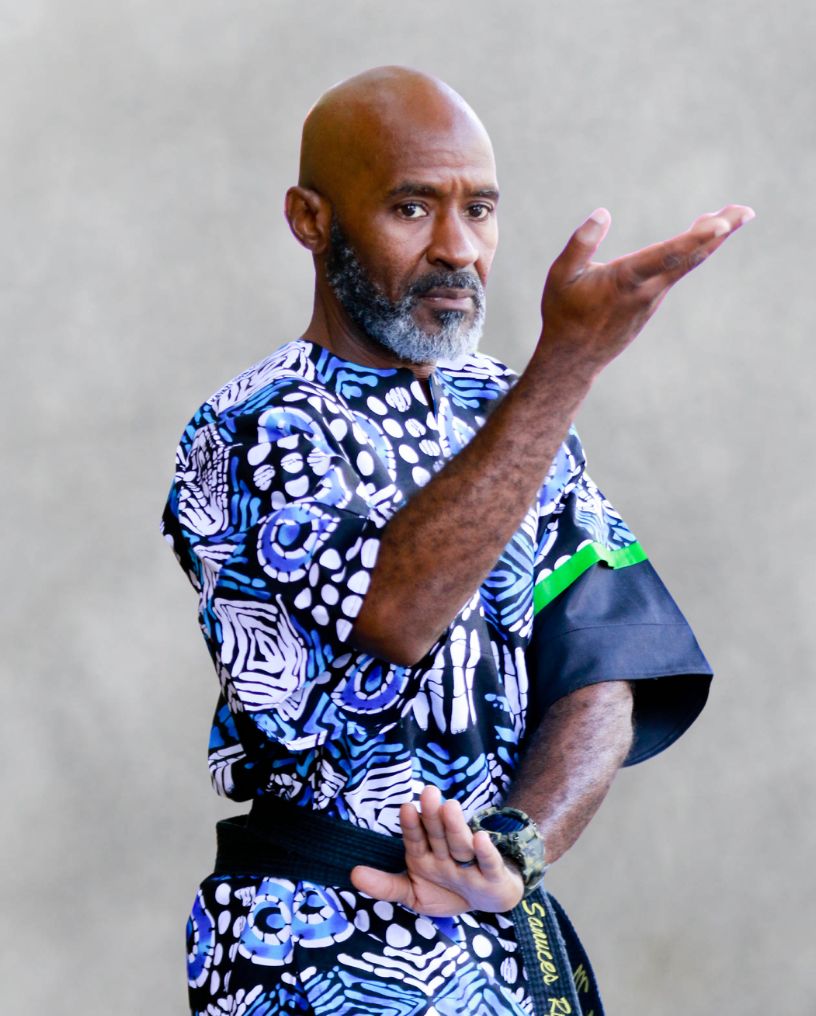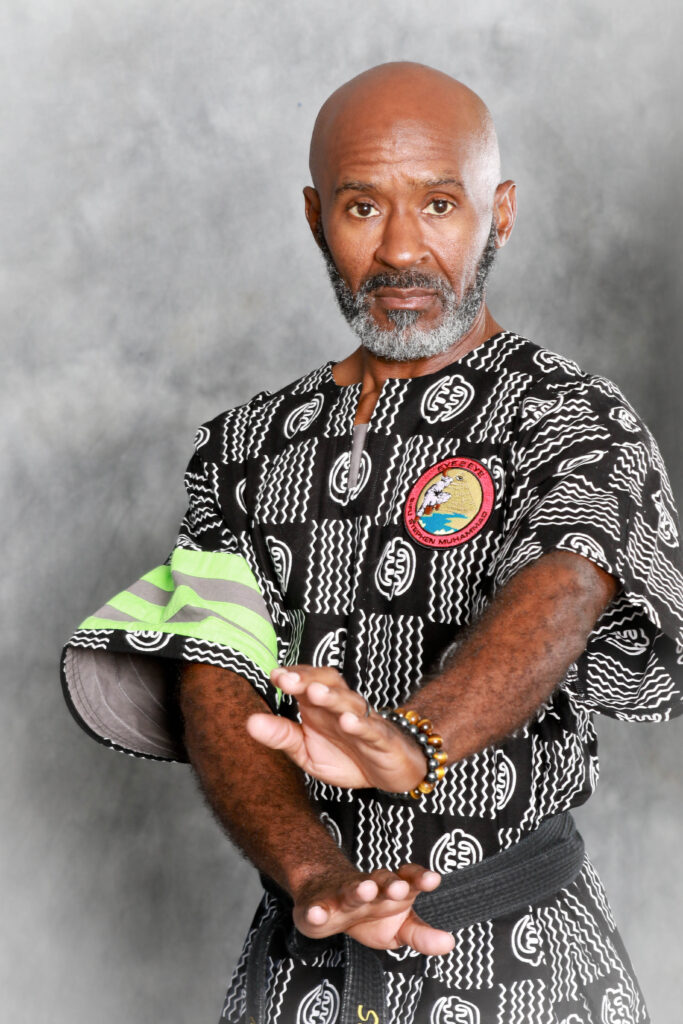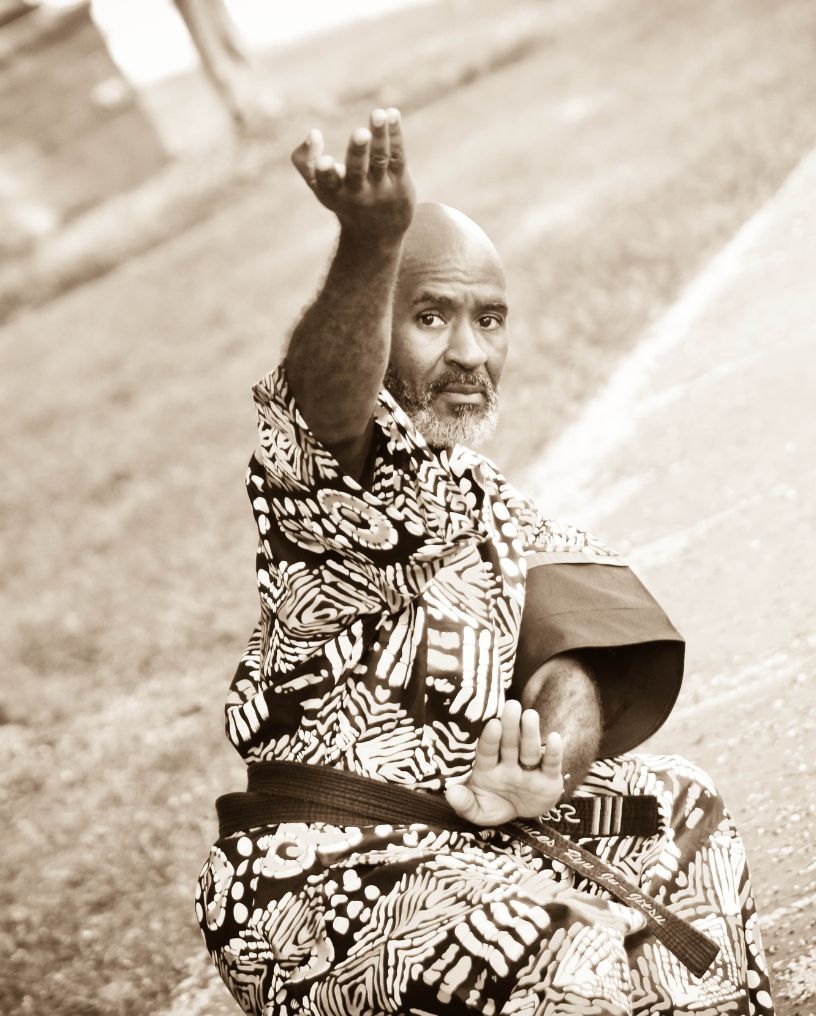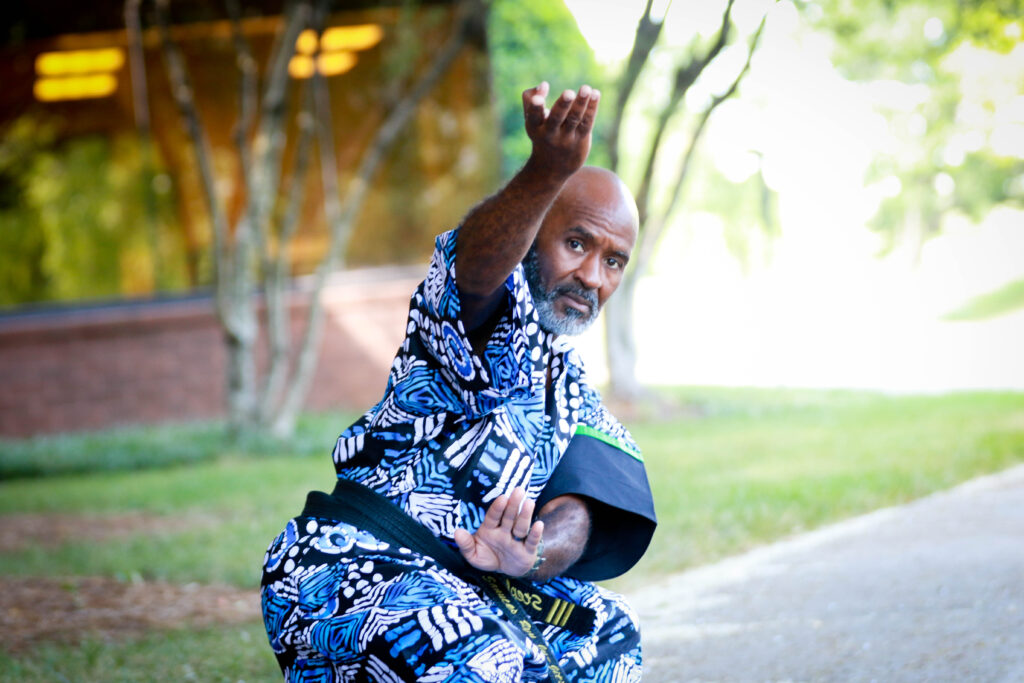Most people are taught to wait. Wait until someone grabs you. Wait until the punch comes. Wait until things get dangerous—and then act.
That’s the foundation of most self-defense systems. But we train differently. We believe that waiting is the most dangerous thing you can do. That’s why we teach self-offense—a mindset and method that puts you ahead of the threat, not behind it.
Let’s break it down.
The Difference Between Self-Offense and Self-Defense
To really rethink the fight, we need to separate two ideas most people confuse. This section clears the fog.
What Traditional Self-Defense Teaches
Most self-defense classes focus on reaction. You’re taught how to block, how to escape a grip, how to respond when someone does something to you. That might sound logical. But think about it: if you’re reacting, the other person already started the fight. You’re already behind.
This model is fine—until it’s not. Until the adrenaline kicks in. Until you freeze. Until your body won’t do what your mind wants.
The Concept of “Self-Offense” at Eye2Eye Combat
Self-offense doesn’t mean attacking someone. It means staying ahead. It’s about noticing the shift in energy before things go south. It’s about your positioning, your posture, your readiness.
You’re not responding to violence—you’re removing the opportunity for it to succeed.
This isn’t just a different way to move. It’s a different way to think.
Is Offense Aggression? Why Words Matter
The language around this can be tricky. When people hear “offense,” they often think it means starting a fight. That’s not what we’re talking about.
Self-offense is preemptive, not provocative. It’s rooted in control, awareness, and purpose. You’re not out to hurt anyone—you’re making sure they can’t hurt you.
Words shape actions. When we reframe how we talk about conflict, we open up new options for how we deal with it.
Where Martial Philosophy Fits In
In martial traditions like Aikido, Jiu-Jitsu, and Aikijitsu, action starts long before a strike is thrown. These arts were built on reading intent, redirecting force, and neutralizing threats before they explode.
That kind of training isn’t based on aggression. It’s based on presence. You move with purpose because you understand your surroundings—and yourself.
Why Reactive Defense Can Fall Short
A lot of people think knowing a few techniques is enough. The truth is, when things get real, that surface-level training cracks. Here’s why.
Delays That Cost You: Waiting for the Threat
By the time you recognize an attack, your body is already behind. Your brain needs to catch up. Your muscles need to react. That gap? It costs time—and time can cost safety.
Self-offense cuts that delay. You don’t wait for the hit. You control the space, the timing, the energy.
It’s the difference between being in a fight and shaping the fight.
Adrenaline, Freeze Response, and Real-Time Decision-Making
Everyone talks about “fight or flight.” What they leave out is “freeze.” That’s often the first response when something unpredictable happens.
Even trained students get stuck if their training focuses only on what to do after the threat starts. Self-offense rewires that. You train your nervous system to move, not freeze. To decide, not hesitate.
This is where learning how to fight becomes more than drills—it becomes instinct.
Static Techniques vs Dynamic Situations
Real conflict doesn’t follow a script. The attacker doesn’t throw the perfect punch. You don’t always land in the perfect stance.
That’s why we train movement, not memorization. Our approach focuses on adjusting in the moment, reading pressure, and flowing into what works.
Technique matters—but adaptability keeps you standing.
How Opponents Exploit Hesitation
A trained aggressor knows how to find hesitation. They see it in your posture, in your eyes, in the way you stand still just a little too long.
When you hesitate, you give control away. That’s why we teach you how to keep initiative—through breathing, posture, position, and decisive action.
Once you train this way, hesitation fades. Confidence steps in.
The Self-Offense Framework: Acting with Intention
So what does self-offense look like in action? It’s not about doing more. It’s about moving smarter. Here’s what that framework includes.
Redirecting Energy Instead of Absorbing It
Aikijitsu and Aikido teach you that you don’t have to block a punch to win. You can move through it. Around it. Past it.
Redirection is a core principle we teach in our classes. It helps you manage both the physical energy of an opponent and the mental pressure of the moment.
Rather than taking impact, you shift it. That’s a different kind of strength.
Anticipation and Positional Control
This is where strategy meets movement. You learn how to read space. You learn how to position yourself so threats don’t even get close.
Controlling space isn’t something you think about—it’s something you feel and train. From how you stand, to where your hands are, to the way you observe your environment.
This kind of training turns movement into insurance.
Mental Rehearsal and Strategic Readiness
You don’t need a sparring partner to get better. You need mental reps. Visualization is a real part of what we teach. You imagine scenarios. You walk through options. You see it, then you do it.
The best athletes in the world use mental rehearsal for a reason—it works. The same applies here.
This is how you sharpen your awareness and stay ahead of situations that might otherwise catch you off guard.
Daily Practice Beyond the Dojo
You don’t need mats or gear to train self-offense. You train every time you walk into a parking lot. Every time you scan a room. Every time you check a mirror, notice an exit, or hold your body with confidence.
We also share fighting techniques to practice at home. They’re simple drills that build posture, response, and awareness. Do them in your bedroom, your kitchen, or even during a break at work.
Self-offense isn’t an activity. It’s a habit.
Martial Arts That Embrace Self-Offense Philosophy
You won’t find this mindset in every martial arts class. Let’s talk about the styles that support it—and how they shape the way we train.
Aikijitsu – Preemptive Flow and Control
Aikijitsu teaches you how to intercept—not after the fact, but as it starts. You blend with the opponent’s energy and turn it into an opportunity.
This style isn’t flashy. It’s effective. It helps students become calm under pressure. We use Aikijitsu principles to show students how to end conflict before it peaks.
It’s highly technical and extremely efficient—ideal for anyone seeking the best self defense course focused on timing and efficiency.
Wing Chun – Directness and Precision
Wing Chun is all about direct routes, tight lines, and efficiency. It’s a system that doesn’t waste energy. Every move has a point, and every point moves you closer to control.
This style pairs beautifully with self-offense because it teaches you to go forward, not backward. It favors speed over strength, and timing over power.
If you’re learning how to fight without relying on size, this is a powerful path.
Traditional Jiu-Jitsu – Adaptive, Strategic Grappling
When things go to the ground, Jiu-Jitsu shines. You learn how to control someone with leverage, not force. You use the opponent’s momentum to your advantage.
For people interested in adults self defense or youth self defense classes, this style offers practical tools for real scenarios—like holds, escapes, and submissions.
It’s tactical. It’s strategic. And it changes the way you think under pressure.
Movement with Purpose: Energy and Intuition
Every technique means something. Every move reflects intention. We don’t teach filler moves. We teach you how to think with your body.
Students often ask how to learn to fight by yourself or how to train outside class. The answer is: train with intention. Move with a goal. Listen to your instincts, refine them, and let training sharpen your intuition.
You don’t need a black belt to move like you belong. You need direction, repetition, and purpose.
Lead the Moment—Don’t Wait for It
If there’s one thing to take from all this, it’s that waiting isn’t a strategy. Learning to act before things escalate—mentally and physically—is what turns uncertainty into clarity. That’s what self-offense gives you: control, confidence, and real options under pressure.
And for women especially, that kind of training is powerful. Our women’s self-defense classes go deeper than surface-level technique. We focus on timing, energy, and movement that works with your natural strengths.
If you’re ready to stop second-guessing and start moving with purpose—step into Eye2Eye Combat. The moment you train with us, you’ll understand what makes this different.
FAQs
1. What’s the difference between self-offense and self-defense?
Self-defense is about reacting to danger once it happens. Self-offense is about staying ahead—reading the moment, moving with purpose, and creating safety before the situation turns physical. It’s a proactive mindset we teach from the ground up.
2. Does self-offense mean starting a fight?
Not at all. It means you don’t wait for trouble to start before taking control of your space and options. It’s not aggression—it’s awareness, timing, and the ability to shift the outcome before things get dangerous.
3. Can beginners learn self-offense techniques?
Definitely. You don’t need any experience to get started. We build the mindset and movement step by step, so you’re not just learning how to fight—you’re learning when and why to move in the first place.
4. How does this training help in real-life situations?
Self-offense training sharpens your instincts, posture, and awareness so you’re not caught off guard. Whether it’s walking to your car at night or sensing a shift in someone’s energy, it helps you lead the moment instead of being led by it.
5. Is this style of training useful for women?
Absolutely. Women benefit hugely from learning how to redirect force, manage distance, and move with confidence. The goal is to make technique work for you, not the other way around—and we make sure you know how to own that from day one.





